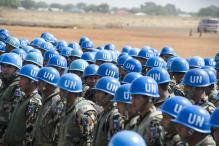When The Gambia and Gabon held presidential elections in December and August 2016, respectively, both votes were important tests for the countries’ entrenched political establishments. In Gabon, President Ali Bongo Ondimba was seeking a second term after inheriting power from his father, who had ruled the country since 1967. In The Gambia, President Yahya Abdul-Aziz Jammeh was running his fifth campaign since seizing power in a military coup in 1992. Both elections produced fiercely contested results, which quickly translated into street protests and the potential for widespread violence.
As part of the international community’s response to these risks, the United Nations regional offices for Central and West Africa, respectively, deployed preventive diplomatic engagements, supported to varying degrees by the UN Country Teams and the UN Department of Political Affairs. Their efforts played important roles in breaking cycles of escalating violence and shepherding political processes towards peaceful settlements in both countries.
This paper seeks to identify the nature and the comparative impact of the UN’s contribution to reducing the risk of conflict-related violence in both the short and medium terms in The Gambia and Gabon, following a period where widespread violence was considered imminent. In complex settings, causality is difficult to establish because many actors and factors contribute to the reduction or increase in violence. Moreover, the UN often plays a supportive rather than a leading role, not only in relation to the conflict parties but also vis-a-vis other external actors engaged in prevention. The challenge, therefore, is to isolate the impact of the UN, both on the conflict actors and others, in order to build a clearer picture of the UN’s contribution. In so doing, the analysis enables the UN to assess the effectiveness of its strategies, identify good practices, and enhance the effectiveness of its conflict prevention efforts in the future.
To undertake this analysis, the study engaged a pilot preventive diplomacy assessment framework developed by United Nations University. It was designed to help researchers better identify:
a) the nature of the UN’s contribution to prevention (when compared with other actors’ contributions);
b) the link between the external intervention, including the UN’s contribution, and the outcome of that intervention;
c) the receptiveness of the environment to a mediated outcome; and d) the sustainability of the intervention.
A comparative analysis of the two cases reveals a number of factors that affected conflict dynamics and influenced the options available to the UN actors, the dilemmas they confronted and the ways in which they balanced trade-offs between competing risks and priorities. These include the appropriate avenue for legal recourse on challenges to the electoral process; the regional and international political and normative environments; dynamics around opposition coalitions before, during and after the crises; and the role of social media.
Download the report here.



